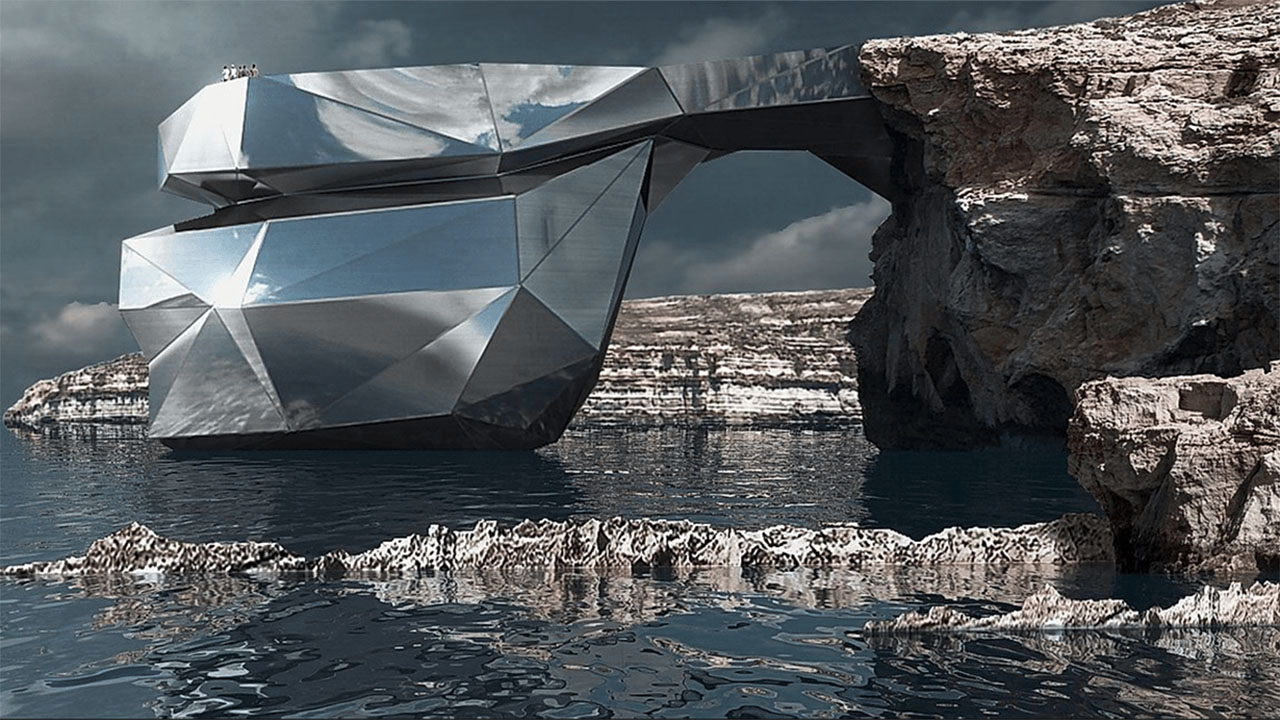Malta (Commonwealth Union)_ The Azure Window was a natural limestone arch in Dwejra Bay on the island of Gozo, Malta. It was one of Malta’s most iconic natural landmarks and a popular tourist destination. The arch collapsed into the sea in a storm on March 8, 2017.
The Azure Window was formed over millions of years by erosion from the wind and waves. It was a massive arch, approximately 98 feet (30 meters) wide and 164 feet (50 meters) high. The arch spanned a deep inlet in the coastline and offered stunning views of the Mediterranean Sea.
The Azure Window was a popular spot for swimming, diving, and snorkeling. The clear blue waters beneath the arch were home to a variety of marine life, including fish, coral, and sea turtles. The arch was also a popular spot for photographers and filmmakers. It was featured in a number of films and television shows, including “Game of Thrones” and “The Count of Monte Cristo.”
The collapse of the Azure Window was a major loss for Malta. The arch was a popular tourist attraction and a symbol of Malta’s natural beauty. However, the collapse also served as a reminder of the power of nature and the importance of conservation.
The Azure Window as a Natural Sculpture
The Azure Window was a truly unique natural sculpture. It was formed by the forces of nature over millions of years and was a testament to the power and beauty of the natural world. The arch was a perfect example of how nature can create art from the most basic elements.
The Azure Window was also a symbol of Malta’s rich geological history. The island is made up of limestone, which is a type of rock that is formed from the remains of marine organisms. The limestone is easily eroded by the wind and waves, which is how the Azure Window was formed.
The Azure Window was a popular tourist destination for people from all over the world. Visitors came to see the arch and to experience the natural beauty of Gozo. The arch was also a popular spot for photographers and filmmakers. It was featured in a number of films and television shows, including “Game of Thrones” and “The Count of Monte Cristo.”
The Collapse of the Azure Window
The Azure Window collapsed into the sea in a storm on March 8, 2017. The collapse was a major loss for Malta. The arch was a popular tourist attraction and a symbol of Malta’s natural beauty. However, the collapse also served as a reminder of the power of nature and the importance of conservation.
The collapse of the Azure Window was caused by a number of factors, including erosion, weathering, and climate change. The arch was made of limestone, which is a type of rock that is easily eroded by the wind and waves. The arch was also exposed to the elements for millions of years, which caused it to weather and weaken. In recent years, climate change has caused more extreme weather events, such as storms and high winds. These events put additional stress on the arch and eventually led to its collapse.
The Legacy of the Azure Window
The Azure Window was a truly unique natural wonder. It was a reminder of the power and beauty of nature. The collapse of the arch was a major loss for Malta and for the world. However, the legacy of the Azure Window will live on. The arch will be remembered as a symbol of Malta’s natural beauty and as a reminder of the importance of conservation.
The collapse of the Azure Window also serves as a reminder of the fragility of our natural world. Climate change and other human activities are putting increasing stress on our natural environment. We must all work to protect our natural world for future generations.
What to Do Now That the Azure Window is Gone
Although the Azure Window is gone, there are still many things to see and do in Dwejra Bay. Visitors can swim, dive, and snorkel in the clear blue waters. They can also explore the nearby cliffs and caves.
One of the most popular activities in Dwejra Bay is visiting the Fungus Rock. The Fungus Rock is a large limestone rock that is located in the middle of the bay. The rock is home to a rare type of fungus that is believed to have medicinal properties. Visitors can take a boat trip to the Fungus Rock to learn more about its history and to see the fungus for themselves.
Another popular activity in Dwejra Bay is visiting the Inland Sea. The Inland Sea is a small saltwater lake that is located on the shore of Dwejra Bay. The lake is surrounded by high cliffs and is connected to the Mediterranean Sea by a narrow tunnel. Visitors can take a boat trip through the tunnel to explore the Inland Sea.
Dwejra Bay is also a great place to relax and enjoy the natural beauty of Gozo. Visitors can sit on the beach and enjoy the sun and the sand.








